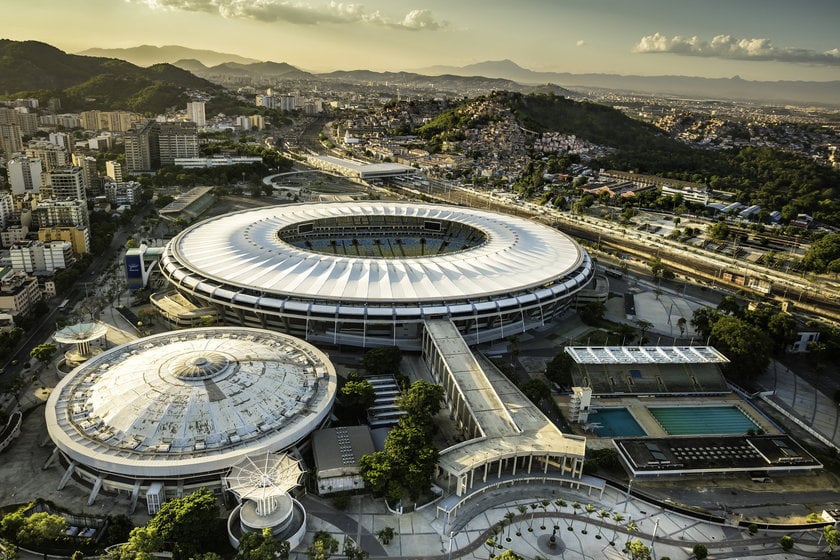Maracanã Stadium, located in Rio de Janeiro, Brazil, holds a sacred place in the hearts of football fans worldwide. As one of the most iconic and historic stadiums in the world, Maracanã has witnessed countless memorable moments, hosted major football events, and left an indelible mark on the sport.
Opened in 1950, Maracanã Stadium was originally built for the FIFA World Cup held in Brazil that same year. Designed by architects Rafael Galvão, Pedro Paulo Bernardes Bastos, Orlando Azevedo, and Antônio Dias Carneiro, the stadium was an architectural marvel, boasting a capacity of over 200,000 spectators in its early years. It held the title of the world’s largest football stadium for several decades, symbolizing Brazil’s passion for the beautiful game.
The stadium’s design incorporates a circular shape, with a distinctive roof structure that appears to be floating above the stands, creating an open and expansive atmosphere. Over the years, Maracanã has undergone several renovations and modernizations to improve its facilities, enhance spectator comfort, and meet international standards. Despite these changes, the stadium has retained its unique charm and historical significance.
Maracanã’s grandeur extends beyond its architectural features. The stadium has witnessed some of the most significant moments in football history. The 1950 FIFA World Cup final, famously known as the “Maracanazo,” took place in this hallowed ground. In a shocking upset, Uruguay defeated Brazil, inflicting a deep wound on the Brazilian national psyche. The game, attended by nearly 200,000 spectators, remains etched in football folklore.
Since then, Maracanã has hosted numerous high-profile matches, including domestic league games, cup finals, and international competitions. It has been the stage for Brazilian club rivalries, such as Flamengo versus Fluminense, as well as international clashes featuring Brazil’s national team. The stadium’s electrifying atmosphere, amplified by passionate fans, creates an unmatched experience for both players and spectators.
Maracanã’s significance transcends football. The stadium has been the venue for major cultural and musical events, including concerts by renowned artists such as Frank Sinatra, Tina Turner, and the Rolling Stones. It has also hosted other sporting events, such as athletics competitions and the opening and closing ceremonies of the 2016 Olympic Games, further solidifying its status as a versatile and iconic venue.
In preparation for the 2014 FIFA World Cup and the 2016 Olympic Games, Maracanã underwent significant renovations. The capacity was reduced to approximately 78,000 spectators, and modern amenities were added, including improved seating, enhanced security measures, and state-of-the-art facilities. These updates aimed to preserve the stadium’s historical heritage while providing a world-class experience for visitors.
Maracanã’s enduring legacy lies in its ability to unite people from all walks of life through the shared passion for football. It represents Brazil’s rich football culture and showcases the country’s unique blend of skill, flair, and vibrant spirit. The stadium’s iconic status continues to inspire future generations of players and fans alike.
As football evolves and new stadiums emerge, Maracanã remains an irreplaceable symbol of football history and Brazilian identity. Its hallowed grounds bear witness to the triumphs, heartbreaks, and unforgettable moments that define the beautiful game. Maracanã will forever hold a special place in the annals of football, embodying the essence of the sport and captivating the hearts of millions.



















Add Comment